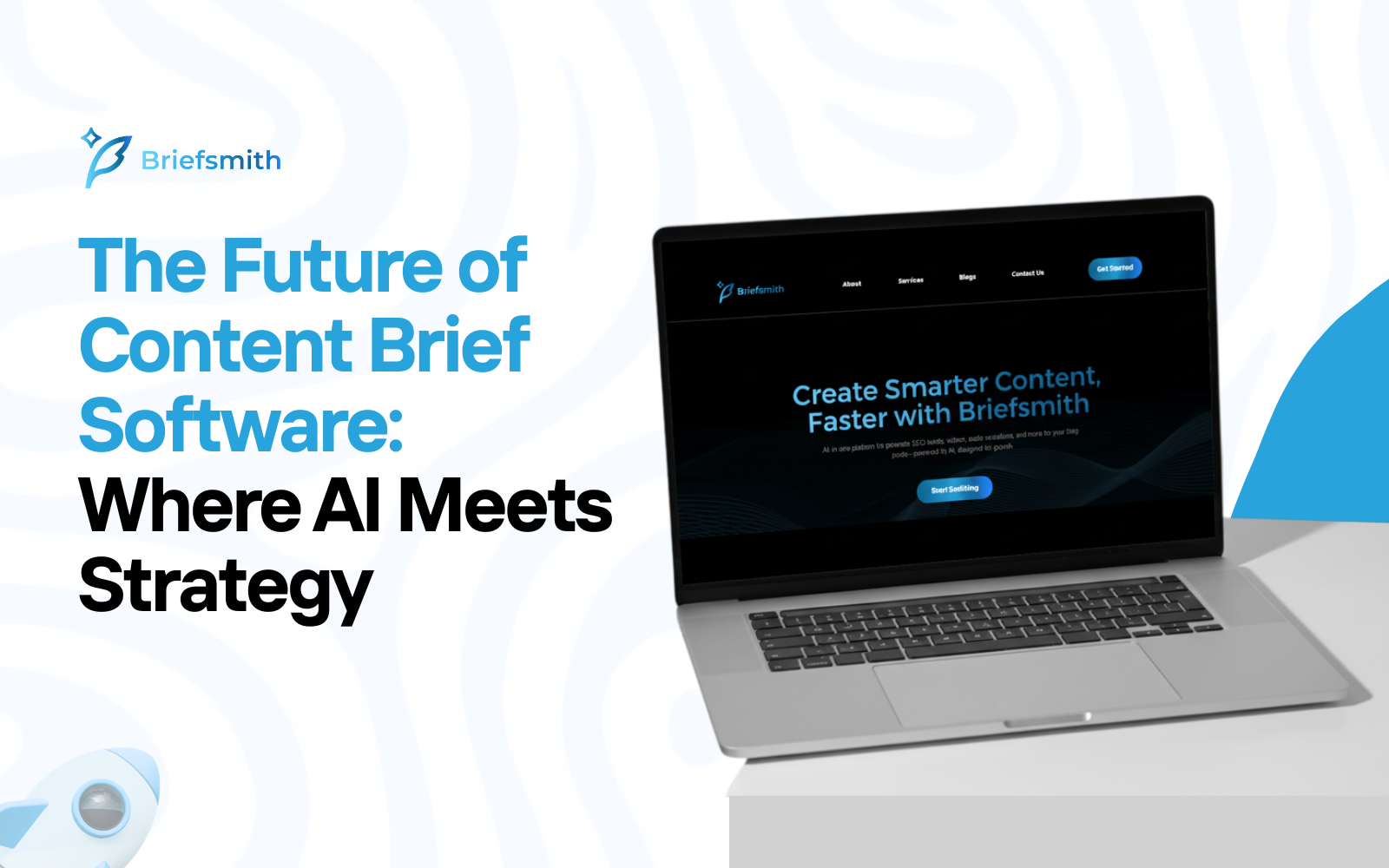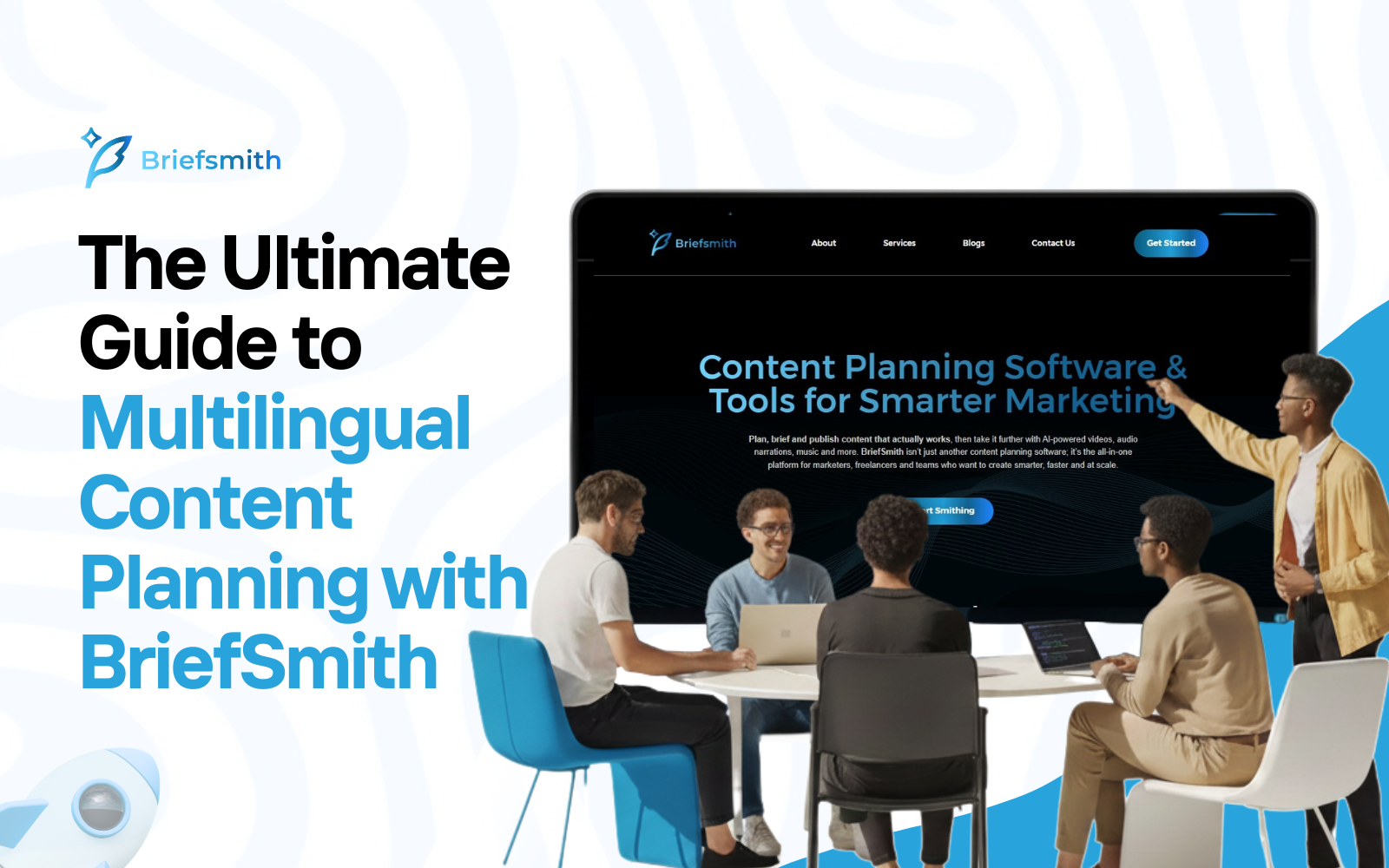The Future of Content Brief Software: Where AI Meets Strategy

Why Content Briefs Matter More Than Ever
In the world of content marketing, the content brief is like a blueprint. Without it, writers build at random, creating content that might look fine on the surface but lacks structural integrity.
Briefs answer the critical questions:
- Who’s the audience?
- What keywords are we targeting?
- What’s the article’s goal?
- What structure will make it work?
The problem? Creating detailed, useful briefs takes time. A lot of time. Which is why so many teams skip them entirely, leading to inconsistent content that doesn’t align with strategy.
But AI is changing that.
For an example of how freelancers are using tools to save time, see Tools for Content Writing: What Freelancers Use to Stay Ahead.
The Evolution of Briefs
Stage 1: No Briefs
Early content marketing often skipped briefs. Writers were handed a topic and told to “just make it SEO-friendly.” Results were hit-or-miss.
Stage 2: Manual Briefs
As SEO matured, marketers began building detailed briefs manually. These were effective, but they could take hours per article, slowing down production.
Stage 3: Template Briefs
Teams created templates in Google Docs or spreadsheets. Better than nothing, but still inconsistent.
Stage 4: AI Briefs (Where We Are Now)
AI tools now generate briefs in minutes, pulling in keywords, structure and competitor analysis automatically. This makes briefs accessible for teams that would otherwise skip them.
Stage 5: Strategic AI Briefs (Where We’re Headed)
The next stage isn’t just automation. It’s AI that ties briefs directly to strategy, ensuring every piece of content isn’t just optimized, it’s aligned with long-term business goals.
The Limitations of Current AI Brief Generators
AI-generated briefs are a massive step forward, but they’re not perfect. Current limitations include:
- Keyword stuffing: Too many tools still focus only on shoving in keywords.
- Lack of context: AI struggles with brand voice or specific audience nuances.
- No strategic link: Most briefs optimize for search but not for the bigger picture (sales funnel, brand positioning, customer journey).
In other words, AI has solved the speed problem, but not the strategy problem.
For more on how strategy keeps content alive long-term, see How to Build a Content Strategy That Doesn’t Fall Apart After 30 Days.
The Future: AI + Strategy Integration
The future of content brief software isn’t just faster briefs. It’s smarter briefs. Here’s what’s coming:
1. Briefs Linked to Business Goals
Instead of creating content “just to rank,” AI will map briefs to specific goals, lead generation, awareness, retention and structure content accordingly.
2. Dynamic, Living Briefs
Briefs won’t be static docs. They’ll update as algorithms shift, competitors publish, or performance data rolls in.
3. Audience Insights Built-In
AI will pull data from CRM systems, analytics platforms and social listening tools to tailor briefs to actual audience behavior, not assumptions.
4. Brand Voice Adaptation
Briefs will include tone guidelines that actually match the brand, whether that’s playful, professional, or technical.
5. Multi-Channel Planning
Future briefs won’t stop at blog posts. They’ll recommend how to repurpose content into newsletters, LinkedIn threads, or short-form videos.
Why This Matters for Teams
For writers, strategic AI briefs mean less second-guessing and more confidence.
For editors, it means fewer rounds of revision because the first draft already aligns with brand and strategy.
For managers, it means content pipelines that run faster without sacrificing quality.
And for businesses, it means finally closing the gap between publishing content and achieving measurable results.
Where BriefSmith Fits In
This is exactly where BriefSmith is headed: not just generating briefs, but generating briefs that:
- Are tied to SEO goals and business strategy.
- Provide structure + keywords + competitive context instantly.
- Live inside a planning ecosystem (so they connect directly to calendars and workflows).
Instead of juggling tools, one for keyword research, one for planning, one for briefs, BriefSmith consolidates it into one system designed specifically for content creation.
See how this helps freelancers avoid overwhelm in Why ‘Best Content Planning Tools’ Lists Are Broken and How to Choose Smarter.
A Glimpse Into the Workflow of the Future
Here’s how a marketer might create content in the near future:
- Input goal: “Drive leads for our new product.”
- AI suggests topics: Based on search trends + competitor analysis.
- AI generates brief: Includes keywords, outline, tone, CTAs and repurposing suggestions.
- Writer drafts: Using the structured brief as a guide.
- AI checks alignment: Ensures draft meets SEO + strategic goals before publishing.
The result? Content that’s not just fast to produce, but actually effective in moving the business forward.
The Human + AI Balance
Let’s be clear: AI won’t replace human writers, strategists, or editors. It will replace the busywork, the hours spent compiling keywords, analyzing competitors, or reformatting templates.
Humans will still:
- Bring creativity and storytelling.
- Understand nuance and cultural context.
- Make judgment calls about brand positioning.
AI will make sure all that human creativity is applied within a framework that’s consistent, data-driven and strategically aligned.
Final Thoughts
Content briefs have always been the unsung hero of great content marketing. The future of content brief software is about making them:
- Faster to create.
- Smarter in structure.
- Aligned with strategy.
- Flexible across channels.
AI is the enabler, but strategy is the driver.
If you’re tired of briefs that feel like cookie-cutter keyword dumps, the next wave of tools, led by platforms like BriefSmith, will finally deliver briefs that combine speed, intelligence and strategic alignment.
Because in the end, the goal isn’t just to publish content faster. It’s to publish content that actually works.
Next up: Want to see how content briefs fit into the broader picture? Check Why SEO Content Briefs Are the Secret Weapon for Content Teams.



